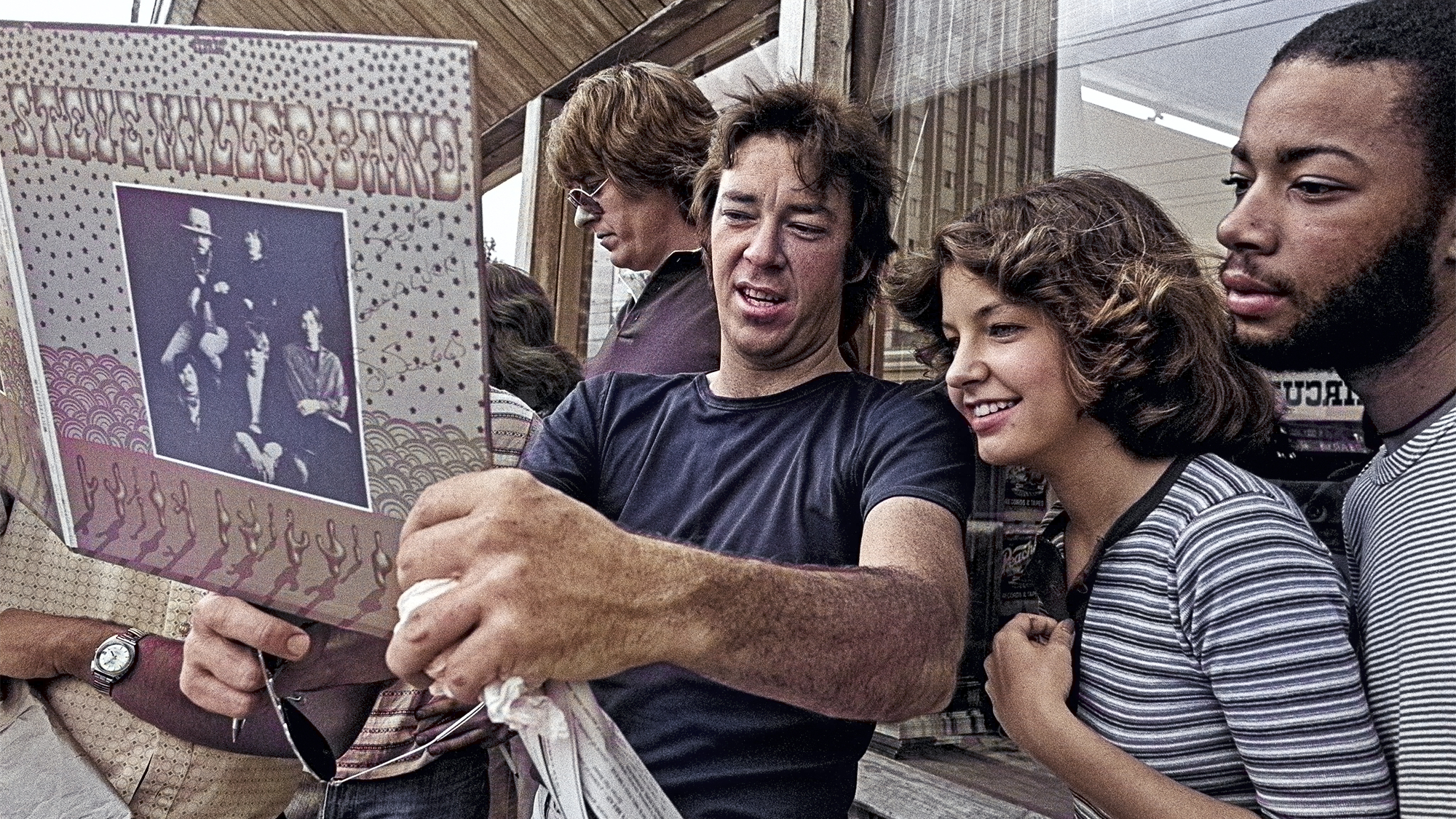From Unviable to Vaiable: Steve Vai Talks Making the Impossible Possible On His New Album, 'Inviolate'
Between a pair of shoulder surgeries and armed with the triple-necked Hydra, the guitar wizard delivers a work of artistic purity.

Inviolate, Steve Vai’s new album, delivers everything fans have come to expect from the guitar wizard in terms of sonic innovation and ever-expanding creative horizons. But it also throws in a few curve balls with the use of clean Gretsch and Strat tones, and the introduction of the Hydra, a beast of a guitar with three necks and enough onboard gizmos to land it on the moon.
Vai’s philosophy about making music is simple in theory but considerably more difficult in practice.
“I always say to myself that, for at least one point in every track, I have to do something that I haven’t done before,” he reveals. “And it has to sound like music.”
The guitarist underwent shoulder surgery to repair an injury around early 2021, which allowed him to record the new album. Subsequent to his tour, at the time of our talk, he discovered that a second surgery was necessary, which will delay his worldwide Inviolate to until September.
Always positive in his outlook, the Vai was unfazed by the temporary setback and looking forward to the eventual road trip.
We see you resisted the temptation to go for the pun on your name with the album title.
I thought about it. [laughs] I wrote that word down so many ways, thinking, How do I want to spell it? I just thought that it would be bastardizing it, and it wouldn’t mean anything anymore, so I avoided the temptation.
All the latest guitar news, interviews, lessons, reviews, deals and more, direct to your inbox!
“Teeth of the Hydra,” the opening track, was cut with your new three-necked Hydra. Was it all played in real time?
Yeah, the idea was to create an instrument that could cut the piece all in one shot. The only other instruments on there are some keyboard parts and some drums.
The title came first, when I saw the finished guitar. I just looked at it and knew it had to be called the Hydra. I got that name from my love of old stop-motion animation movies, like Jason and the Argonauts.
I wanted to capture the essence of the guitar – its image and its abilities – and translate that into music
Steve Vai
I then thought, What does the piece of music need to say with that title? How do I make the title audible? That’s basically how I approached writing the song. I wanted to capture the essence of the guitar – its image and its abilities – and translate that into music.
All the bass, seven-string and harp strings are performed on the Hydra at the same time. The challenge was the linearness of it. I knew that, ultimately, I had to create something that was enjoyable as a standalone piece of music, with a nice melody.
I didn’t want it to be a gimmick for the guitar. People may not realize what is going on when I perform that piece until they see me do it.
It’s a little like patting your head and rubbing your stomach at the same time.
Exactly, that’s a good way of putting it. Either that or juggling chainsaws. [laughs]
Having seen photos of the guitar, we're wondering what the case for it looks like. It must be huge.
It’s so funny that you mention that. I had a meeting about it with my tech this morning, because the case that we have is large. To take it on tour is a whole other story. We have to have an Anvil case built around the existing case. It’s going to be the size of a Volkswagen when we’re done.
Is there any prospect of Ibanez producing it for sale if there is a demand?
[laughs] I can assure you that the Hydra is not a production-model instrument. It took four years to build. It’s highly technical, with built-in synthesizers, a Sustainer pickup… So many things. The cost to build it would not be within anybody’s budget.
Having said that, I guess I’ve seen odder things happen. Hopefully, it will spark the imagination in some new young luthiers to do outrageous things.
Hopefully, it will spark the imagination in some new young luthiers to do outrageous things
Steve Vai
The thing about multinecked guitars is that their functionality is usually fairly limited, but if you can embrace the potential of the Hydra, you’re in a whole other neighborhood.
So you won’t be throwing the Hydra around your neck in the tradition of all the hair-metal era videos?
[laughs] I tried. No, you can’t because we have a strap that goes around my waist to take the weight of the guitar. I should look into getting something to make it spin around like ZZ Top did in that old video clip [for “Legs”] with the furry guitars.
“Zeus in Chains” has a very commercial stop-start feel in the main part of the song.
This started out as a simple riff that I had recorded into my iPhone before I went to sleep, on a guitar that I keep by my bed. I usually sit there and plunk about before bed and document any riffs that I feel have some energy.
I had the first 16 bars, and then it sat there, beckoning me. Occasionally, I’d give in and pull the track to have a think about it. The basic demo idea had all of the energy, so I knew what the finished piece was going to be like.
The title didn’t come until after I recorded the piece. I knew that I wanted to enhance the tonality of it by using a seven-string, for those big, fat clustery chords. The idea was to let the chords ring out lushly, then create a soaring melody that arose out of the chords.
Very ugly can be beautiful too, so I had some very ugly chords spitting out beautifully macabre melodies.
When I was listening back and trying to come up with a title, I was trying to let the track tell me what the title should be: What imagery was coming at me? When it got to the heavy middle section, it just said the title to me.
The riff usually tells me what guitar to use
Steve Vai
“Little Pretty” was recorded on a Gretsch, which most fans wouldn’t expect to see on one of your records.
Yeah, it took me by surprise too. [laughs] This was, again, a bedside riff that I had. I had the chords for the first eight bars, and there was something very intriguing about it. It had a darkness, but there was some kind of light, and there was a menacing nature to it.
All I had was those few chords, and it lived on the shelf for about five years. When I started to unpack it, I was listening to the riff, which was recorded on an unplugged electric guitar going straight into my iPhone. I just followed the chords, and the melody unfolded.

I originally had another title for it, “The Red Flower,” but the melody kept saying “Little Pretty” to me. The menacing nature of the harmonic structure created this image for me of something reflective of Dorothy and the Wicked Witch, or Little Red Riding Hood. The whole melody suggested the wolf to me.
The riff usually tells me what guitar to use, which will usually be a [Vai’s signature Ibanez] JEM or a PIA. I’m really not comfortable on any other guitar or able to play to my full potential. I really love archtops though, and I have a wonderful collection of them.
I love the tonality of a Gretsch. I guess most of us know that tonality because of Brian Setzer. The riff just didn’t work on a solid-bodied guitar, but the Gretsch had the dimension that I was looking for.
At times it suggests hints of a spy movie soundtrack.
Yeah, it’s kind of nefarious. [laughs]
There’s another major sonic departure for you on “Candlepower.” The guitar on that cut sounds like a clean Strat, although it is still unmistakably you playing.
Yeah, I can’t help that. [laughs] No artist can. This was another bedside riff [plays four bars on an unplugged guitar], then a couple of chords that went with it to create some energy.
One of the things that I like to do for myself is create a challenge by setting up certain parameters. It’s not uncommon for me to consider doing a guitar solo all on one string with one finger, because, although you’re applying limitations, there are infinite possibilities within those limitations. I’ll end up doing things that I wouldn’t normally do, so then I’ll have a new vocabulary.
When I listened back to my “Candlepower” riff, I decided to flesh it out, use a clean Strat-style guitar, use my right-hand fingers – I’ve spent precious little time honing my finger-picking technique – and no whammy bar, which is like removing an arm for me. [laughs]
Anything that might seem impossible doesn’t seem so impossible once you start doing it
Steve Vai
As I said before, I like to infuse each song with something that is unique for me. I came up with the concept in my head for bending and releasing multiple strings in different directions at the same time, while crawling up the neck using open strings to increase the flow of the music.
I knew what it would sound like before I did it, but it was unbelievably difficult for me to execute the technique at first.
This is another one of those “patting your head and rubbing your stomach” moments, isn’t it?
Exactly, plus rubbing the bottom of my feet with my pinkie and rubbing my toe while my head is spinning. [laughs]
What I have noticed, though, is that anything that might seem impossible doesn’t seem so impossible once you start doing it.
The last track that we wanted to discuss is “Knappsack,” which demonstrates the way that a limitation can create opportunity and inspiration. You were unable to use your right hand at all, because you were recovering from shoulder surgery.
Yeah. What I try to do is first accept what is, and from there ask myself, What can the situation do to serve me? That’s a very important question to ask. Most people don’t ask questions when they see obstacles; they only see negativity and their creativity becomes derailed.
I had a long-standing shoulder issue which needed to be fixed, and it was an easy, simple surgery. Because I’m doing so much press, it seems like maybe I’m this guy who’s accident prone, but I’m very healthy and I’m doing very well.

When I got back from the surgery, I had this sling on my shoulder, and the name of the sling was the Knappsack, which was designed by the doctor that did my surgery, Dr. Knapp. A new Onyx Black PIA had just arrived at the house when I got back. I sat in my studio, put the guitar on my lap – I couldn’t use my right hand at all, as it was in the sling – so I started playing with my left hand, and it all just came to me.
I wanted to create an enjoyable piece of music, with a nice melody and some crazy soloing, which is almost the story of my life. [laughs] When it was done, I asked myself whether it sounded like a piece of music or a novelty, and it sounded like a piece of music.
Most people don’t ask questions when they see obstacles; they only see negativity and their creativity becomes derailed
Steve Vai
You’ve mentioned a solo acoustic/vocal album that you’ve been working on sporadically. Is that likely to be completed and released in the foreseeable future?
I uploaded a version of me singing and playing acoustic guitar on a song called “The Moon and I” during lockdown, which is something I never normally do. Over the years, I’ve collected a lot of little snippets of songs that have a harmonic feeling to them, that don’t sound like anything from my catalog.
When I uploaded that song, the response was surprising to me. There were so many favorable comments. That made me think that I should get on with doing the acoustic album, as I had 15 songs.
I recorded the guitar parts for 13 of them and got about halfway through the vocals when my shoulder went out.
When I got back from the surgery and recorded “Knappsack,” I knew I wanted to tour, so I finished Inviolate, because I’m not going to tour on a solo acoustic album. I will finish the vocals and get the record out at some point, but I have a lot of product planned.
And now you’re about to have another shoulder surgery.
Yes, which means that by the time I’ve recovered from it, I’ll be preparing for the tour, so there isn’t any opportunity to do any recording unless I can get the vocals done while I’m on tour.
I had the original surgery over a year ago, but over the summer I did something stupid and I re-tore one of the tendons. I could probably get away with completing the tour, but to play the Hydra is quite a challenge and it exaggerated the tear.
It became very obvious that it wouldn’t be wise to go on a 250-show tour until I get this thing fixed. It’s a relatively simple fix and my arm will be out of use for about three weeks. But it might be a while before I can play the Hydra again. [laughs]

Order a copy of Inviolate here.
Mark is a freelance writer with particular expertise in the fields of ‘70s glam, punk, rockabilly and classic ‘50s rock and roll. He sings and plays guitar in his own musical project, Star Studded Sham, which has been described as sounding like the hits of T. Rex and Slade as played by Johnny Thunders. He had several indie hits with his band, Private Sector and has worked with a host of UK punk luminaries. Mark also presents themed radio shows for Generating Steam Heat. He has just completed his first novel, The Bulletproof Truth, and is currently working on the sequel.

